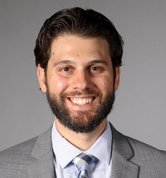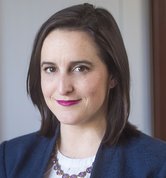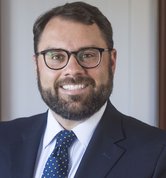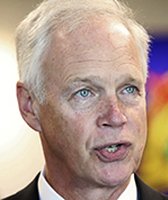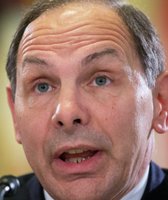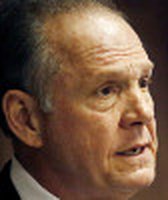Stand up for the facts!
Our only agenda is to publish the truth so you can be an informed participant in democracy.
We need your help.
I would like to contribute
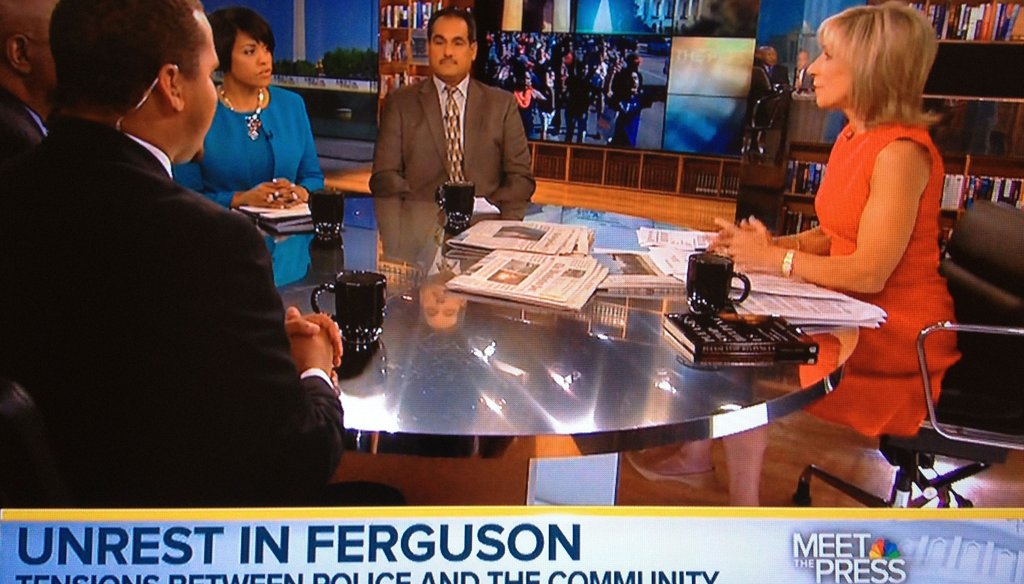
Andrea Mitchell guest-hosted "Meet the Press" on Aug. 17, 2014.
The killing of an unarmed black teen by a white police officer in a St. Louis suburb is raising questions about the makeup of the police department and its response to the Aug. 9 shooting.
In some cases, answers are hard to come by.
On Sunday, actor and civil rights activist Jesse Williams appeared on CNN’s State of the Union to discuss the shooting. Williams, best known for his role as a doctor on Grey’s Anatomy, emphasized that journalists should not sensationalize findings that don’t answer questions about why 18-year-old Michael Brown was shot by police — like a security video Ferguson authorities released of Brown allegedly robbing a convenience store minutes before he was killed.
"You will find that the people doing the oppressing often want to start the narrative at a convenient point, always want to start the point in the middle," said Williams, who is on the board of directors for the Advancement Project, a civil rights group. "This started with a kid getting shot and killed and left in the street for four hours. I've never seen a white body left in the street for four hours in the sweltering heat. I've never — you know, the cop doesn't call — doesn't call in the shooting. The body isn't put in an ambulance. It's (put) in some shady unmarked SUV."
We wondered about WIlliams’ assertion that the officer involved in the shooting, Darren Wilson, failed to call in the incident. What we found is a situation currently too murky to render a judgment.
But here’s what we know.
There are two sources that could be seen as backing up Williams’ claim.
One is the lawyer for Dorian Johnson, who was with Brown at the moment of the confrontation with police and fled the scene unharmed. According to the Washington Post, Johnson’s attorney, former St. Louis mayor Freeman Bosley Jr., said Saturday that the Ferguson police officer "doesn’t attempt to resuscitate. He does not call for medical help. The officer didn’t call it in that someone had been shot."
Additionally, the hactivist group known as Anonymous released audio from the St. Louis County dispatch from the afternoon of Brown’s death. According to the Post, the authenticity of the recordings has been confirmed.
In the recordings, a dispatcher said Ferguson police asked for help to assist with crowd control in the area of the shooting and asked for permission to send an officer.
Moments later, the dispatcher said she hears an officer is involved in a shooting, but the information is coming from local media.
"We just got another call stating that an officer’s out shooting at (the intersection of) Canfield and Coppercreek. I don’t who called it in, it was called into my desk," the dispatcher said. "Be advised this came from the news."
She adds: "We’re just getting information from the news, and we just called Ferguson back again and they don’t know anything about it."
In fact, incident reports released by Ferguson police indicate a swift response.
A time line produced by St. Louis Public Radio based on police reports breaks down police action Aug. 9, including the convenience store robbery and the shooting.
-
12:00:07 p.m., Wilson left a scene where he was assisting with a "sick call."
-
12:01:50 p.m., a shooting event is opened by the Ferguson police department.
-
12:02:22 p.m., Ferguson dispatch alerts another officer, who is en route and arrives on scene.
-
12:04:55 p.m. EMS is contacted.
None of this makes clear who made the initial call to police. It’s possible dispatch sent an officer based on a report of a shooting from a witness, or that the officer may have been nearby and responded independently. However, whether it was Wilson who made the call, it does appear that police units arrived quickly on the scene.
One statistic that we could verify, however, came from NBC’s Andrea Mitchell, who filled in as host on Meet the Press.
Mitchell, describing the tension between police officers and the people living in Ferguson, said that "you've got three black officers and 50 white officers with a town that is 67 percent African-American."
Those figures basically are correct as there may be as many as four black officers. We rate the claim Mostly True.
Mitchell’s statistic about Ferguson’s black population checks out through the city’s QuickFacts profile from the U.S. Census Bureau. As of 2010, 67.4 percent of the city’s 21,000 residents are black, and 29.3 percent are white.
Ferguson Police Chief Thomas Jackson, who is white, told the Los Angeles Times and the Associated Press that the police department has 53 officers, three of whom are black. He also said that the other 50 officers are white, according to newspaper reports. Put another way, Ferguson police officers are 94 percent white and 5.6 percent black.
Tim Zoll, a spokesman for the Ferguson Police Department, said Sunday that there are actually four African-American officers among the 53-person officer corps. "The discrepancy may have been that we really don't see black or white among our colleagues," Zoll said.
Whether the number is three or four is a minor point.
Ferguson Mayor James Knowles, who is also white, has addressed the lack of diversity in the police department. According to an Aug. 12 report by St. Louis-based TV station KSDK, Knowles told reporters that young African-Americans aren’t interested in police jobs.
"We hire everyone that we can get," Knowles said. "There's also the problem that a lot of young African-American people don't want to go into law enforcement. They already have this disconnect with law enforcement, so if we find people who want to go into law enforcement who are African-American we're all over it because we want them to help us bridge the gap."
Katie Sanders contributed to this report. Read the full fact-checks at PunditFact.com.
Our Sources
See individual fact-check and story.
